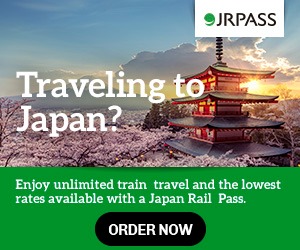Worst Time to Travel to Japan: Avoid Crowds, High Prices, and Bad Weather
Japan offers a rich tapestry of experiences in every season—Winter, Summer, Spring, and Fall—ranging from serene temples and countryside escapes to bustling cityscapes filled with Food and culture. Yet, some periods can make Travel more challenging, with higher Holiday costs, larger crowds, and transportation delays. By understanding these peak times, you can better plan your Itinerary, discover the best Things To Do, and enjoy Destinations across Japan with a more aesthetic and cost-effective Vacation.
JR REGIONAL PASSBUDGET FRIENDLYJR PASS 7 DAYSJR PASS 14 DAYSTIPS AND SECRETS
Josh K
9/26/20253 min read


1. Golden Week (Late April to Early May)
Golden Week is a collection of national holidays that typically spans from April 29 to May 5. During this time, domestic travel surges as locals take advantage of the extended break.
Why to avoid:
Overcrowded transportation: Trains, buses, and flights are often fully booked weeks in advance.
Inflated accommodation prices: Hotels and ryokans raise rates due to high demand.
Packed tourist attractions: Popular sites like Kyoto's temples or Tokyo Disneyland experience massive crowds.
Shinkansen reservations: All seats on the Nozomi Shinkansen become reservation-only during this period, eliminating unreserved seating options.
If you prefer a more relaxed experience, it's best to steer clear of Japan during Golden Week.
2. Obon Festival (Mid-August)
Obon is a traditional Buddhist event honoring ancestors, typically observed around August 13–16. It's one of Japan's busiest travel periods.
Why to avoid:
High travel volume: Many Japanese return to their hometowns, leading to congested transportation.
Business closures: Some local businesses and restaurants may close for the holiday.
Sweltering weather: August is among the hottest and most humid months in Japan.
Shinkansen reservations: Nozomi Shinkansen trains operate with all-reserved seating during Obon, requiring advance booking.
Traveling during Obon can be challenging due to the combination of heat and crowds.
3. New Year’s Holiday (Late December to Early January)
The New Year is Japan's most significant holiday, with celebrations from December 29 to January 3.
Why to avoid:
Widespread closures: Many shops, restaurants, and attractions shut down for several days.
Travel congestion: Domestic travel peaks as people visit family or go on vacations.
Limited services: Tourist services may be unavailable or operate on reduced schedules.
Shinkansen reservations: All seats on the Nozomi Shinkansen are reservation-only during this period, and trains often sell out quickly.
While experiencing Japanese New Year traditions can be enriching, be prepared for limited access to amenities.
4. Typhoon Season (Late July to Early October)
Japan's typhoon season runs from late July through early October, bringing heavy rains and strong winds.
Why to avoid:
Travel disruptions: Flights and trains may be canceled due to severe weather.
Safety concerns: Flooding and landslides can occur, especially in coastal and mountainous areas.
Unpredictable conditions: Weather can change rapidly, affecting travel plans.
If traveling during this period, monitor weather forecasts and have contingency plans.
5. Peak Summer Heat (Late July to Early September)
Summers in Japan are characterized by high temperatures and humidity, particularly from late July to early September.
Why to avoid:
Extreme heat: Temperatures often exceed 35°C (95°F), making outdoor activities uncomfortable.
Health risks: Increased chances of heatstroke and dehydration.
Limited relief: Urban areas retain heat, offering little respite even at night.
Unless attending specific summer festivals, consider visiting during cooler months.
6. School Holidays (Late March to Early April, Late July to August, Late December to Early January)
Japanese school holidays coincide with increased domestic travel, leading to crowded tourist spots.
Why to avoid:
Higher prices: Accommodation and transportation costs rise due to demand.
Busy attractions: Families traveling during breaks fill popular destinations.
Limited availability: Booking accommodations and tickets becomes more challenging.
For a more tranquil experience, plan your visit outside these periods.
Best Times to Visit Japan
To enjoy pleasant weather and fewer crowds, consider traveling during:
Mid-May to June: Before the rainy season, with blooming flora and comfortable temperatures.
Late October to November: Autumn foliage peaks, offering stunning landscapes and mild weather.
Cherry Blossom Season (Late March to Early April): Experience Japan's iconic sakura season, with peak blooms typically occurring in late March and early April across central Japan. For instance, Tokyo's cherry blossoms are expected to reach full bloom around March 30, Kyoto around April 6, and Osaka around April 5 . Note that this period is also popular among tourists, so plan and book accommodations and transportation in advance.
These shoulder seasons provide a balance of favorable conditions and manageable tourist traffic.









